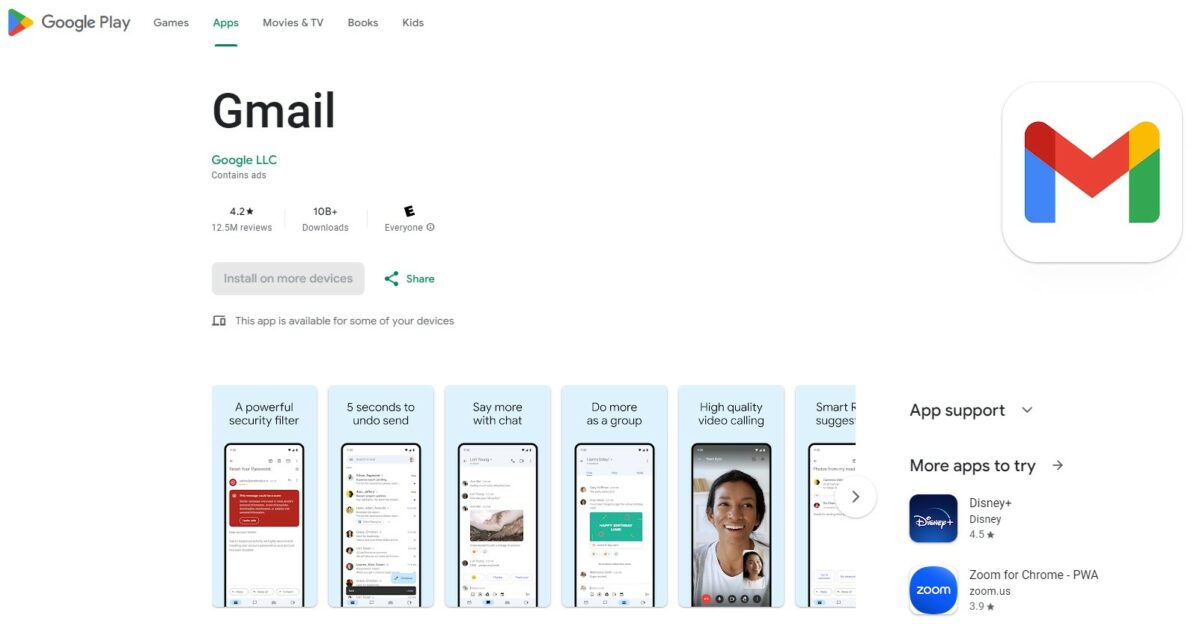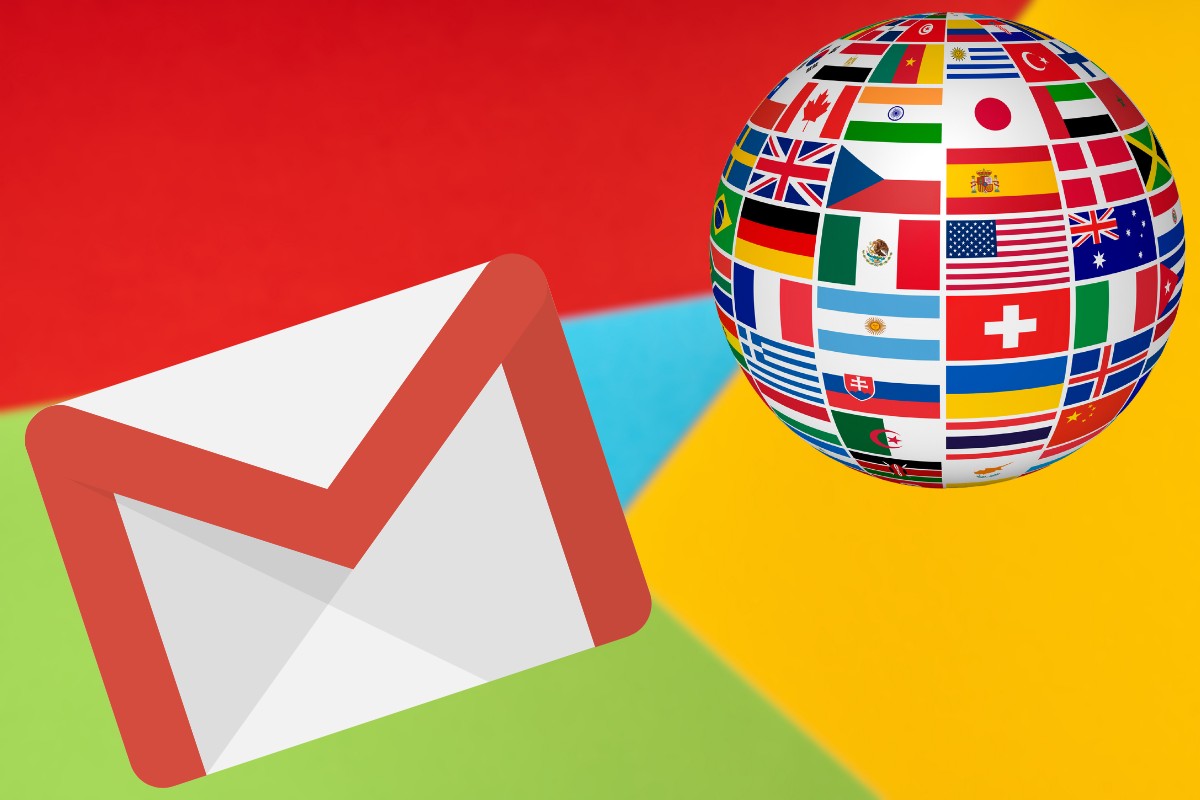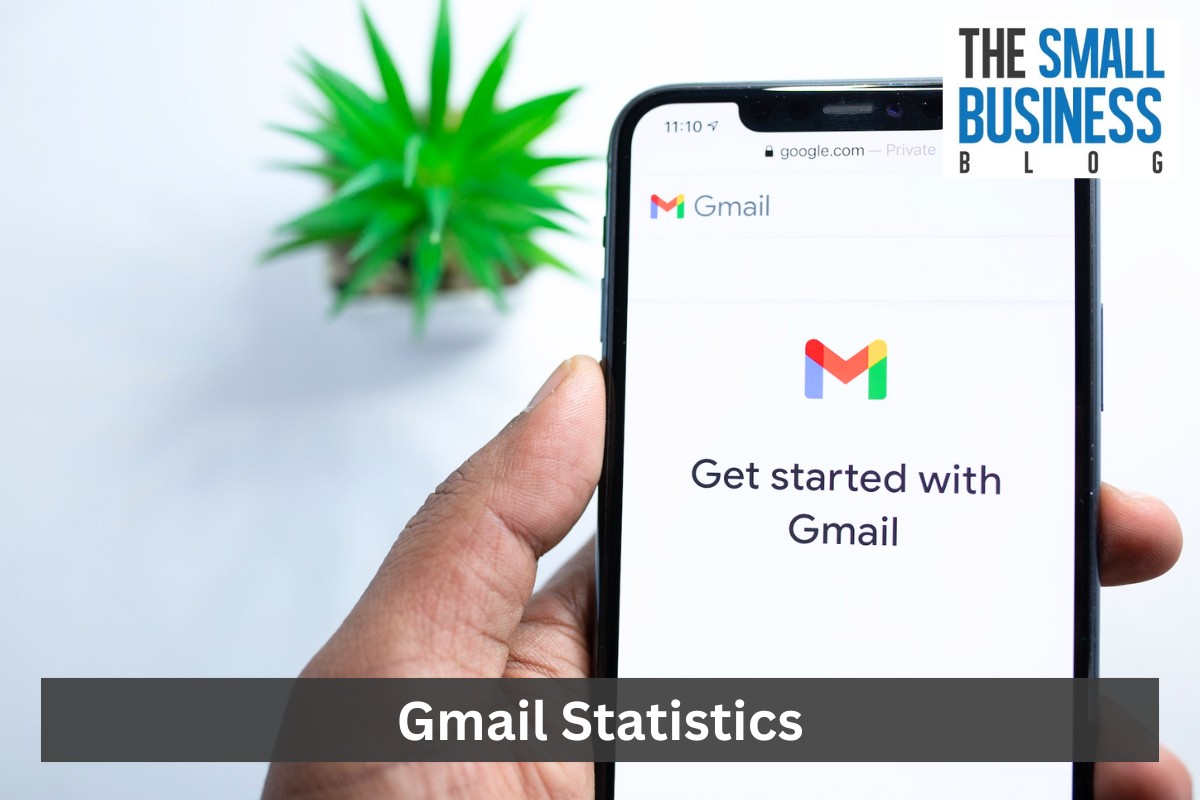Communication has transformed in the digital age, and Google Mail, commonly known as Gmail, stands at the forefront of this transformation.
Developed by Google and launched in 2004, Gmail has redefined how people interact and engage with emails.
This email service platform serves as a primary means of personal communication.
It facilitates exchanging messages and staying in touch with family and friends.
Likewise, it is widely used for work-related communication.
Its integration with other Google services, like Google Docs, Google Sheets, Google Calendar, and Google Drive, enhances productivity among colleagues and teams.
Furthermore, Gmail is used by businesses and marketers to reach target audiences and engage customers with tailored content.
Do you want to know more about Gmail, its immense influence, and its impact on communication, technology, and society?
This article will provide valuable insights into the platform’s reach, user base, usage patterns, user behavior, and other Gmail statistics.
Post Contents
- 1 Key Statistics
- 2 Top Gmail Statistics in 2024
- 2.1 1. There are More Than 1.8 Billion People Worldwide Using Gmail.
- 2.2 2. As of May 2023, Gmail is the Second-Most Used Email Client Worldwide, Accounting for Nearly 28% Market Share.
- 2.3 3. The Number of Sent and Received Emails Daily in 2023 is Around 347 Billion.
- 2.4 4. An Average Gmail Account Has Approximately 5,700 Messages.
- 2.5 5. 92% of Startup Enterprises in the United States Use Gmail As Their Email Service Provider.
- 2.6 6. Gmail has the Highest Share of Webmail Opens, at 75%.
- 2.7 7. Gmail and Outlook Had a Significant Influence Over the Business Landscape, Holding a Shared Market Share of 63.79%.
- 2.8 8. Gmail’s Installations Have Exceeded 10 Billion, Securing a Position as the 4th Most Downloaded Android App.
- 2.9 9. Most Gmail Visitors are from the United States, Accounting for Almost 14%.
- 2.10 10. In 2020, Approximately 67% of Individuals Used Gmail At Least Once.
- 2.11 11. On Average, Gmail Users Send Roughly 5.3 Emails and Receive 10.8 Emails Daily.
- 2.12 12. Gmail Users in 2023 are Primarily Between 25 to 34 Years Old.
- 2.13 13. Gmail’s Automated Machine Learning Blocks over 10 Million Malicious and Spam Emails Every Minute.
- 2.14 14. More Than 68% of Incoming Messages in Gmail are “Promotions.”
- 2.15 15. Gmail Users May Receive an Error Notification Once They Reached the Limit for Sending an Email.
- 2.16 16. Google Provides 15 GB of Storage for Each Account That Can Be Used Across Gmail, Google Drive, and Google Photos.
- 2.17 17. Emails Labeled as “Promotions” on Gmail Have an Inbox Placement Rate of 84.5%, While Emails Labeled as “Social” Have a Higher Inbox Placement Rate, Exceeding 87%.
- 3 Updates in Your Inbox
- 4 Conclusion
Key Statistics
- More than 1.8 billion people worldwide actively use Gmail today.
- In the United States, Gmail is the preferred email service provider for 92% of startup enterprises and over 60% of mid-sized businesses.
- Gmail holds the largest portion of webmail opens, with a market share of 75%.
- The platform is the second-most used email client in May 2023, with nearly 28% market share.
- Emails categorized as “Promotions” on Gmail achieved an inbox placement rate of 84%, whereas those labeled “Social” had an 87% inbox placement rate.
- Gmail and Outlook have exerted substantial influence in the business landscape, holding a 63.79% shared market share.
- Google provides users with 15 GB of storage to be shared across their Gmail, Google Photos, and Google Drive accounts.
Top Gmail Statistics in 2024

1. There are More Than 1.8 Billion People Worldwide Using Gmail.
Gmail is a free email service that allows users to send, receive, and manage emails using a web-based platform or mobile application.
The platform’s inception was initiated by Google in 1999 and eventually achieved its fully developed stage in 2004.
At that time, Yahoo Mail already had 12 million users, Hotmail amassed 30 million, yet Gmail had none.
It was not until February 2016 that the platform achieved a notable milestone by having its first billion active users.
According to the most recent Gmail statistics report, the global user base of Gmail has surged to over 1.8 billion, a significant increase from 1.5 billion in 2018.
Let’s take a look at the number of Gmail active users worldwide from 2012 to 2020:
- Gmail active users worldwide reached 350 million in January 2012
- Gmail active users worldwide reached 425 million in June 2012
- Gmail active users worldwide reached 900 million in May 2015
- Gmail active users worldwide reached 1 billion in February 2016
- Gmail active users worldwide reached 1.5 billion in October 2018
- Gmail active users worldwide reached 1.8 billion in January 2020
(FinancesOnline, Statista, Earthweb, Techjury)
2. As of May 2023, Gmail is the Second-Most Used Email Client Worldwide, Accounting for Nearly 28% Market Share.
Gmail became the second-most used email client worldwide in 2023 due to its user-friendly interface, comprehensive email management tools, and integration with other Google services.
It seamlessly integrates with Google Drive, Google Docs, Google Sheets, Google Calendar, and other Google Services, enabling users to enhance productivity, share large files, and collaborate.
This email service is often recognized by its email addresses ending with “@gmail.com.”
As of May 2023, Gmail accounts for a 27.96% email client market share, while Apple accounts for 58.67%.
Below are the most-used email clients worldwide in May 2023 by market share:
- Apple accounts for an email client market share of 58.67%
- Gmail accounts for an email client market share of 27.96%
- Outlook accounts for an email client market share of 4.39%
- Yahoo! Mail accounts for an email client market share of 2.85%
- Google Android accounts for an email client market share of 1.48%
(Oberlo)
3. The Number of Sent and Received Emails Daily in 2023 is Around 347 Billion.
Based on estimations, the total number of sent and received emails daily in 2023 is approximately 347.3 billion, equivalent to more than 4 million exchanged emails every second.
This impressive count represents a notable increase from 333.4 billion in the previous year and could hit 376 billion by 2025.
Here are the numbers of sent and received emails daily from 2017 to 2025:
- An estimated 269.0 billion emails were sent and received daily in 2017
- An estimated 293.6 billion emails were sent and received daily in 2019
- An estimated 319.6 billion emails were sent and received daily in 2021
- An estimated 347.3 billion emails were sent and received daily in 2023
- An estimated 376.4 billion emails will be sent and received daily in 2025
(EnterpriseAppsToday)
4. An Average Gmail Account Has Approximately 5,700 Messages.
On a regular workday, an average employee receives approximately 121 emails and sends roughly 40 emails.
This figure shows the active nature of modern communication.
Among these emails, 24% are promptly opened within the initial hour of receipt.
Meanwhile, each Gmail account has roughly 5,700 messages on average.
This number of messages comprises various content, from personal exchanges to social and promotional communications.
(Earthweb)
5. 92% of Startup Enterprises in the United States Use Gmail As Their Email Service Provider.
A remarkable 92% of startup enterprises in the US show a strong inclination toward choosing Gmail as their go-to email service provider.
This noteworthy preference is caused by the platform’s exceptional advantages to the business landscape and affordability.
Its pricing depends on the package chosen within the comprehensive Google Workspace ecosystem, mostly from $5.40 to $25 per user.
Aside from the startups, Gmail’s influence extends further.
Over 60% of mid-sized enterprises in the country opt for Gmail as their preferred email solution.
This percentage underscores the widespread adoption of Gmail within the business sector, solidifying its reputation as a trusted and effective communication tool for various types and sizes of enterprises.
(EmailAnalytics)
6. Gmail has the Highest Share of Webmail Opens, at 75%.
Gmail remains the most popular webmail email client, regardless of changes in its market share.
Its share over time varies between 71% and 80% but settled at 75% in 2021.
On the other hand, Outlook.com’s market share has experienced a substantial increase of 140% compared to the previous quarter.
The following are the top three webmail opens by market share in 2021:
- Among the users who open emails using webmail services, 75% use Gmail.
- Among the users who open emails using webmail services, 14.8% use Yahoo! Mail.
- Among the users who open emails using webmail services, 2.4% use Outlook.com.
(Litmus)
7. Gmail and Outlook Had a Significant Influence Over the Business Landscape, Holding a Shared Market Share of 63.79%.
Gmail was the predominant choice among email providers in 2021.
However, delving into the business world unveils a relatively different scenario.
In the domain of business email accounts, Gmail and Outlook find themselves in close competition, holding 33.59% and 30.20% market shares, respectively.
Gmail offers email hosting for an impressive 2.53 million domains, while Outlook serves over 2.27 million domains.
This collective effort culminates in a combined market share exceeding 63%.
GoDaddy’s email hosting service comes next, with a 16.25% market share, catering to the needs of more than 1.22 million domains.
(PitchFunnel)
8. Gmail’s Installations Have Exceeded 10 Billion, Securing a Position as the 4th Most Downloaded Android App.

Gmail is Google’s primary email application for Android devices.
It is a default application on many Android phones.
Over the years, it has evolved into a vital addition to productivity apps, catering to the needs of both students and professionals.
This app has achieved a significant milestone by becoming the fourth Google application to reach 10 billion installations.
Other Google apps that have crossed this remarkable milestone are Google Play Services, YouTube, and Google Maps.
(Indiatimes)
9. Most Gmail Visitors are from the United States, Accounting for Almost 14%.
Gmail.com recorded 85 million total visits in July 2023, up from 80.3 million in the prior month.
This growth is equivalent to 5.91%. Most Gmail visitors are from the United States.
Users from the country sent the most desktop traffic to the Gmail website, accounting for nearly 14%.
Here are the top countries that sent the most desktop traffic to Gmail.com in July 2023:
- 13.95% of Gmail’s desktop traffic in July 2023 was from users in the US
- 11.61% of Gmail’s desktop traffic in July 2023 was from users in Russia
- 7.60% of Gmail’s desktop traffic in July 2023 was from users in Spain
- 4.83% of Gmail’s desktop traffic in July 2023 was from users in Mexico
- 4.46% of Gmail’s desktop traffic in July 2023 was from users in India
(SimilarWeb)
10. In 2020, Approximately 67% of Individuals Used Gmail At Least Once.
In terms of personal email usage, Gmail stands out as the most popular email service in 2020, followed by Microsoft email services.
Data shows that approximately 67% of individuals used Gmail at least once.
About 19% of these users engage with their Gmail accounts daily.
On the other hand, 59% opt for Microsoft email services.
Among this figure, 19% use Outlook daily.
Moreover, 27% of respondents use Yahoo Mail, with 8% utilizing their Yahoo Mail account daily.
(FindStack)
11. On Average, Gmail Users Send Roughly 5.3 Emails and Receive 10.8 Emails Daily.
On average, Gmail users in 2012 sent roughly 5.3 emails and received 10.8 emails daily.
These users consume an estimated 1.4 MB of storage space daily.
According to the report, an average user takes around two decades to consume the 10 GB storage capacity.
The report also highlighted that the average age of a Gmail account is around three years, but other Gmail users maintain their accounts for a longer time.
(ZDNet, EnterpriseAppsToday)
12. Gmail Users in 2023 are Primarily Between 25 to 34 Years Old.
The majority of Gmail audiences are from younger age groups between 25 to 34 years old.
This age group visited Gmail.com the most in July 2023, accounting for over 33%.
Below is the age distribution of Gmail audiences in July 2023:
- 23.35% of Gmail audiences are between 18 to 24 years old
- 33.8% of Gmail audiences are between 25 to 34 years old
- 19.37% of Gmail audiences are between 35 to 44 years old
- 11.88% of Gmail audiences are between 45 to 54 years old
- 7.43% of Gmail audiences are between 55 to 64 years old
- 4.10% of Gmail audiences are between 65 years and older
(SimilarWeb)
13. Gmail’s Automated Machine Learning Blocks over 10 Million Malicious and Spam Emails Every Minute.
The digital world remains vulnerable to malicious online activities such as phishing, fraud, and the persistent influx of spam emails.
In response, Gmail maintains an unwavering commitment to safeguarding its users.
Leveraging cutting-edge technology, Google has deployed an automated machine-learning system that serves as a proactive defense mechanism.
This advanced system effectively intercepts and blocks over 10 million malicious and spam messages every minute.
This defensive approach prevents almost 15 billion unwanted messages from reaching users daily, blocking around 99.9% of malware, spam, and phishing.
This robust defense strategy underscores Gmail’s unwavering dedication to maintaining a secure and reliable email environment for its expansive user base.
(CSO, EmailAnalytics)
14. More Than 68% of Incoming Messages in Gmail are “Promotions.”
Promotional emails are sent by businesses or individuals, aiming to promote products, services, events, offers, or announcements.
These emails are components of email marketing campaigns designed to engage recipients, capture their attention, and encourage them to purchase, sign up for an event, or visit a website.
These promotional messages are often automatically sorted into Gmail’s “Promotions” tab, which users can access separately from their primary inbox.
This categorization helps users quickly identify and separate promotional content from their “Primary” emails.
Statistics reveal that about 68% of incoming messages are categorized by Gmail as “Promotions.”
Around 22% fall under the “Updates” category, signifying notifications of changes and developments.
This percentage leaves a small portion, approximately 10%, of incoming messages that contain messages beyond promotions and updates.
(EmailAnalytics, Marketing Charts)
15. Gmail Users May Receive an Error Notification Once They Reached the Limit for Sending an Email.
To ensure the security of Gmail accounts and prevent spam messages, Google implements measures that restrict the volume of messages each user can send daily and the number of recipients per message.
When standard Gmail users reach the limit, they might encounter an error message like “You have reached a limit for sending mail” or “You exceeded the maximum recipients.”
These errors occur when standard Gmail users send a single email to more than 500 recipients or send more than 500 emails within 24 hours.
However, users utilizing paid Google Workspace are allowed to send 2,000 emails daily.
This upgraded service offers flexibility to expand audience reach by including up to 10,000 recipients.
(Gmail)
16. Google Provides 15 GB of Storage for Each Account That Can Be Used Across Gmail, Google Drive, and Google Photos.
Gmail was introduced to the public on April Fool’s Day in 2004.
Each person registered during its launch was granted a complimentary 1 GB of storage.
Marking Gmail’s first anniversary, Google extended its generosity by giving users 2 GB of free email storage.
In 2013, Google further elevated its offerings by providing users with 15 GB of storage to be shared across their Gmail, Google Photos, and Google Drive accounts.
Every Google standard account has a collective 15 GB of storage.
When users upgrade accounts to Google One, their storage increases to 100 GB or beyond, depending on the selected plan.
Users also gain access to supplementary member benefits through this upgrade.
(Google, Techjury Earthweb)
17. Emails Labeled as “Promotions” on Gmail Have an Inbox Placement Rate of 84.5%, While Emails Labeled as “Social” Have a Higher Inbox Placement Rate, Exceeding 87%.
Emails categorized as “Promotions” exhibit a substantial placement rate of approximately 84.5% within the Gmail inbox.
This percentage signifies that promotional emails successfully go to the inbox section.
However, their read rate drops to 19.2%.
This figure illustrates that emails under the “Promotions” folder may receive less user attention.
Similarly, Gmail messages flagged as “Social” enjoy a favorable rate of inbox placement, standing at 87.2%.
This percentage indicates that social-related emails secure a position in the inbox.
However, the engagement level for these emails is low.
Only 22.4% of Gmail users read and interact with messages labeled as “Social.”
Updates in Your Inbox
In the case of emails classified as “Updates,” their inbox placement rate is at 86.8%.
This figure shows that update-related emails successfully land in the inbox.
About 28% of Gmail users engage and read emails under the “Updates” category.
This data underscores the intricate interplay between email categorization, inbox placement, and user engagement within the Gmail ecosystem.
(EnterpriseAppsToday)
18. Gmail is Accessible in a Staggering 105 Languages.

According to recent Gmail statistics data, there is a substantial rise in the platform’s usage patterns in countries where English is not the primary language.
This trend reflects the growing adoption of Gmail among non-English-speaking nations across the globe.
To ensure inclusivity and accessibility for its diverse and widespread user base, Gmail offers services in a staggering 105 languages.
This expansive language support shows Gmail’s commitment to accommodating users from various linguistic backgrounds, enhancing its global reach and user experience.
(Techjury)
Conclusion
Gmail is one of the most widely used email service platforms worldwide.
It plays a significant role in transforming the way people communicate electronically.
The platform had an extensive user base over the years because of its user-friendly interface, robust email management tools, and integration with other Google services.
Businesses utilize Gmail for email marketing campaigns to reach wider audiences.
Acquiring knowledge about various Gmail statistics and information helps individuals, businesses, and marketers understand how users interact and engage with emails.
By comprehending these statistics, stakeholders can assess the performance of email campaigns.
Likewise, understanding these data empowers enterprises to make informed decisions, optimize email marketing efforts, and achieve better engagement and conversion rates.
That’s all about the Gmail statistics and other related information.






























